- Sep 7, 2025
- 181
- 197
If you’ve ever felt like your dog “knows” a command but only listens sometimes, you’re not alone. It’s one of the most common frustrations I see, and the fix isn’t more obedience, it’s more engagement.
Engagement is your dog’s desire to work with you. It’s not about luring, bribing, or controlling, it’s about creating a dog that chooses to tune into you even when the world is full of distractions. When engagement is strong, obedience becomes effortless. When it’s weak, even the best training falls apart.
Obedience teaches your dog what to do. Engagement teaches them why they should do it, and who they should do it for. A dog that’s only focused on the food in your hand will obey when they see a treat… and ignore you when they don’t. A dog that’s engaged with you works for your attention, energy, and approval, food simply becomes one of many rewards.
Here are a few ways to strengthen that connection:
1. Make yourself part of the game
Don’t just give your dog food or toys, become the source of fun. Tug, chase, run, and celebrate together. You’ll quickly see them light up at your energy, not just the reward.
2. Use movement, not monotony
GSDs thrive on dynamic training. Keep sessions short, animated, and unpredictable. If you’re bored, they are too.
3. Reward eye contact
Eye contact is the foundation of focus. Mark and reward it often. Over time, you’ll see your dog checking in naturally, even in distraction-heavy environments.
4. Be clear and consistent
Mixed signals break engagement. Your tone, timing, and intent matter more than perfect words. Dogs read energy faster than commands.
5. End while they still want more
It’s better to stop a session when your dog is still eager than when they’re mentally checked out. You’re building enthusiasm, not endurance.
Engagement is your dog’s desire to work with you. It’s not about luring, bribing, or controlling, it’s about creating a dog that chooses to tune into you even when the world is full of distractions. When engagement is strong, obedience becomes effortless. When it’s weak, even the best training falls apart.
Obedience teaches your dog what to do. Engagement teaches them why they should do it, and who they should do it for. A dog that’s only focused on the food in your hand will obey when they see a treat… and ignore you when they don’t. A dog that’s engaged with you works for your attention, energy, and approval, food simply becomes one of many rewards.
Here are a few ways to strengthen that connection:
1. Make yourself part of the game
Don’t just give your dog food or toys, become the source of fun. Tug, chase, run, and celebrate together. You’ll quickly see them light up at your energy, not just the reward.
2. Use movement, not monotony
GSDs thrive on dynamic training. Keep sessions short, animated, and unpredictable. If you’re bored, they are too.
3. Reward eye contact
Eye contact is the foundation of focus. Mark and reward it often. Over time, you’ll see your dog checking in naturally, even in distraction-heavy environments.
4. Be clear and consistent
Mixed signals break engagement. Your tone, timing, and intent matter more than perfect words. Dogs read energy faster than commands.
5. End while they still want more
It’s better to stop a session when your dog is still eager than when they’re mentally checked out. You’re building enthusiasm, not endurance.
